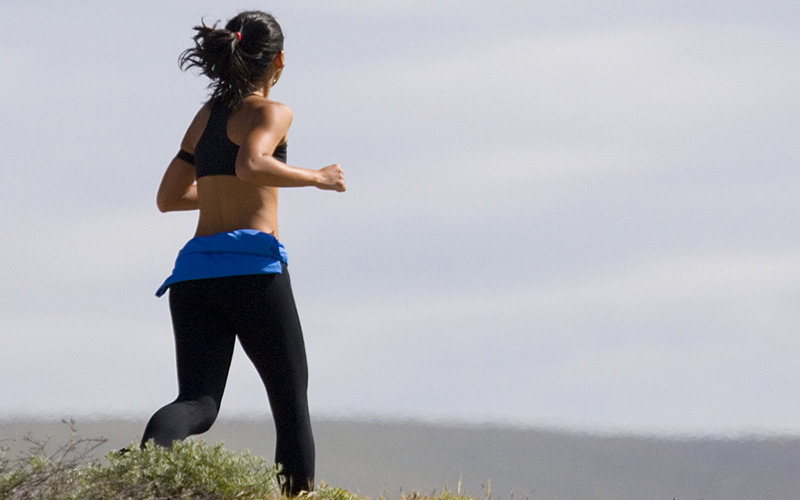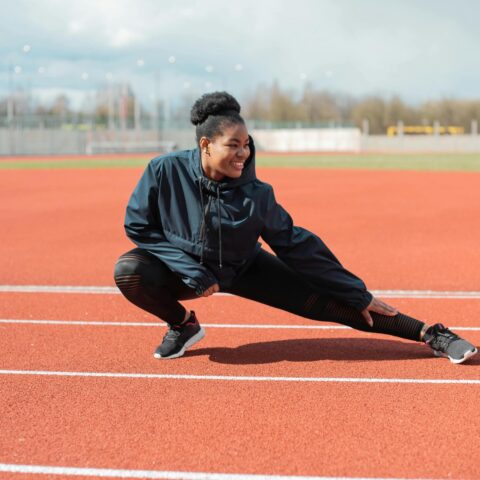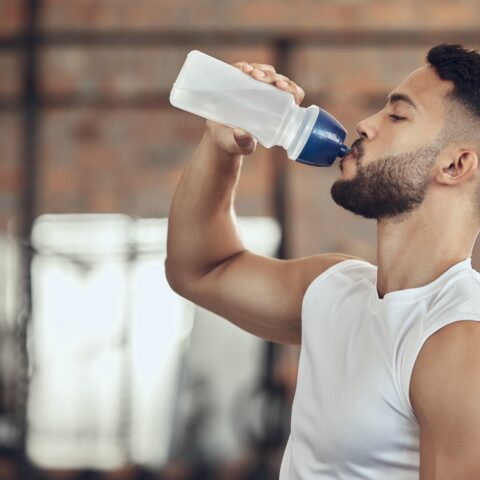Is Fasted Training the Fastest Route to a Lean Body?

We read all about it, not just in the Paleosphere, but also in the world of sports nutrition; train on an empty stomach in order to become better at using fat as your fuel. I do it myself, for Pete’s sake! Not only that, but I have many clients following the same “fasted training” regime, waking up and running or spinning before breakfast.
But, is fasted training all it’s chalked up to be? A recent study published in the International Journal of Sports Nutrition1 concluded otherwise. The study measured changes in fat versus lean mass after a one-month period in which one group trained in a fasted state, while the other group simply followed a low calorie diet. Both followed the same exercise protocol of an hour of steady-state aerobic exercise performed three days per week and were provided with customized dietary plans designed to induce a caloric deficit.
Nutritional counseling was provided throughout the study period to help ensure dietary adherence and self-reported food intake was monitored on a regular basis. A meal replacement shake2 was provided either immediately prior to exercise for the low-calorie group or immediately following exercise for the fasted group.
Both groups showed a significant loss of weight and fat mass from baseline, but no significant between-group differences were noted in any outcome measure. Their findings indicated body composition changes associated with aerobic exercise in conjunction with a hypo-caloric diet are similar regardless whether or not an individual is fasted prior to training.
The authors of the study concluded body composition changes associated with aerobic exercise in conjunction with a hypo-caloric diet are similar regardless whether or not an individual is fasted prior to training, albeit because the study was short and small in number, more research is warranted in a longer term trial with a greater number of participants.
So is that all she wrote? Hardly.
You don’t need to be a fellow research scientist to be able to see some red flags in the study. The first point of contention for me was the macronutrient ratio of the dietary regime the subjects were asked to follow. Unsurprisingly, both were close to nearly half their calories from carbohydrates and, I’d venture to say, it’s a safe bet that those calories weren’t likely coming purely from fresh, local, in season vegetables.
Rather, given that the diets were likely supervised by registered dieticians, it’s more than likely participants were eating foods we see typically regarded as ‘healthy carbs’ in the media, perhaps items like quinoa to whole grain foods, dare I say the ‘low-fat pretzels’. Of course, this is just conjecture on my part, but not at all a far-fetched assumption.
Next, we have the issue of the meal replacement shake. Without knowing which of the versions of the shake was used, we don’t really know what the macronutrient ratio provided to the participants. What we do know, however, is that they weren’t given food. Have a look at one of their products, Elite Whey Protein’s, ingredient label:
Elite 100% Whey Protein Blend (Whey Protein Isolate , & Whey Protein Concentrate), Whey Peptides, Polydextrose, Natural and Artificial Flavors, Cocoa (Processed With Alkali), Gum Blend (Cellulose Gum, Xanthan Gum, Carrageenan), Salt, Zytrix® Enzyme Blend (Protease, Lactase, Lipase), Acesulfame Potassium, Sucralose, Stevia Leaf Extract. Contains Milk and Soy (Lecithin).
While there are certainly a few products on the market I’m aware of that make good “in-a-pinch” protein options, the laundry list above, in my opinion, doesn’t make the great for a natural, clean protein option.
Finally, what were the subjects eating during the rest of the day and what did the low-calorie group actually eat? This isn’t my first rodeo. Having been in the nutrition and fitness field first as a young athlete far before college and experiencing the trends of the early nineties, I can vouch firsthand for what diets were like back then. I followed an “athlete’s plan for eating” in high school given to me by a nutrition professional which had me eating 1,200 calories/day at 5’6” and 119 pounds exercising an average of 90 minutes a day. I was only 16 and guess what I did for extra energy? Had some Diet Coke!
I shudder the thought now, but the point is if we rely on a low calorie approach rather than the source of the calories, we’re doing ourselves in.
So, back to the study. What’s the take away? In my experience, training fasted is a good way to start your day, whether you’re an athlete, a mom trying to lose baby weight, or a busy executive looking for the best way to achieve optimal mental focus. As with everything else, I recommend using your own body as a subject and doing your own experiment.
If you’re already following a True Paleo regime, all you need to do is wake up tomorrow, and head out for a 30 minute jog or elliptical session for your first test. Come home, hydrate and eat your normal breakfast consisting of some good protein, natural fat and a hefty portion of fresh veggies. Then, the next day, try the same exact thing but have a ripe, spotty banana first. Which elicits a better response?
Granted, what we eat as athletes will demand a change in the macros of a post exercise meal (perhaps including some yam or higher glycemic fruit in a meal if the session has been particularly long or taxing), but this simple test above is a good way to measure your own baseline.
If you start the day in fat-burning mode and carry on with True Paleo Diet eating all day long, you’ll be in a much higher-energy state with improved mental focus and guess what? When you’re eating properly rather than dieting, you’ll be able to achieve your weight loss goal, albeit slowly and steadily sometimes, but in a manner that lets you sustain it long term.
Go train…fasted!
References
[1] Body composition changes associated with fasted versus non-fasted aerobic exercise, Brad Jon Schoenfeld,, Alan Albert Aragon, Colin D Wilborn, James W Krieger and Gul T Sonmez, Journal of the International Society of Sports Nutrition, 11:54 doi:10.1186/s12970-014-0054-7, November 2014
[2] (Pursuit Recovery, Dymatize Nutrition, Dallas, TX). The shake contained 250 calories consisting of 40 g carbohydrate, 20 g protein, and 0.5 g fat.




